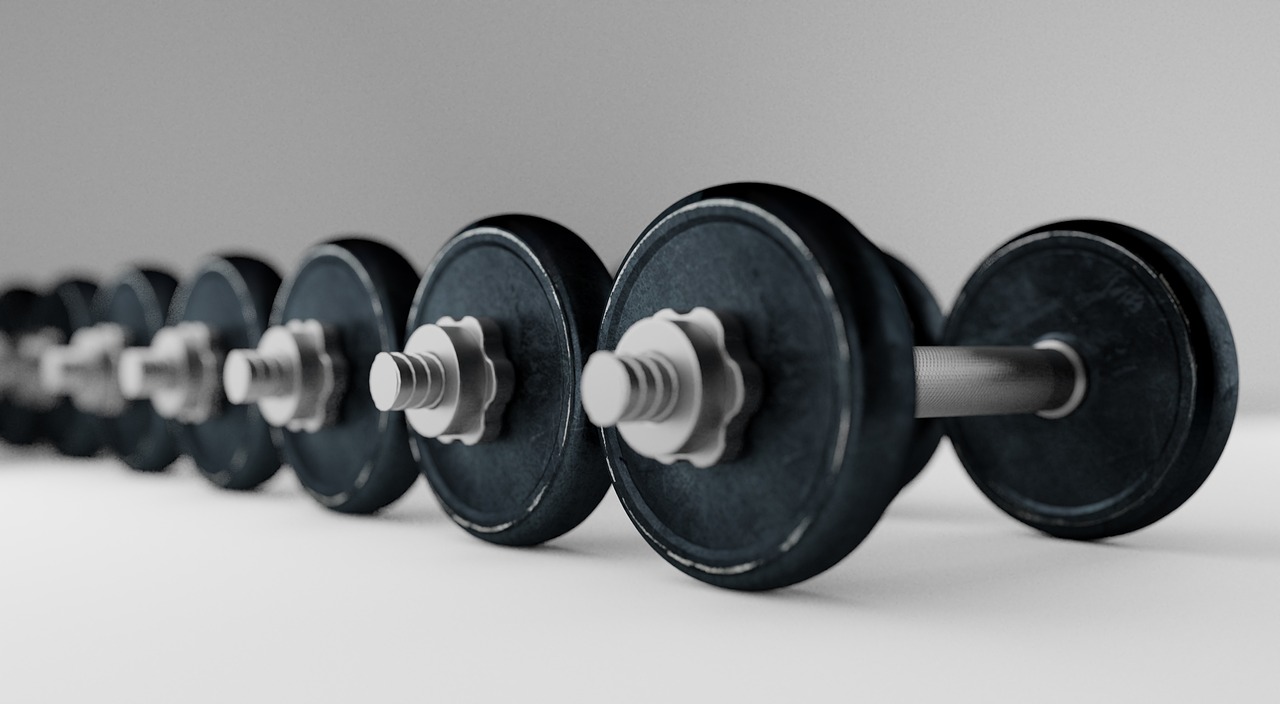What Is The Recommended Frequency Of Weightlifting Sessions?

Are you looking to get in shape and build some muscle? If so, you may be wondering about the ideal frequency for weightlifting sessions. Setting a regular schedule for your weightlifting sessions is crucial to achieving your fitness goals. In this article, we will explore the recommended frequency of weightlifting sessions and why it matters. By understanding the optimum frequency, you can effectively plan your workouts and maximize your results. Whether you are a beginner or a seasoned weightlifter, this article will provide you with valuable insights on how often you should lift weights to make the most out of your fitness journey. So, let’s get started!

Determining Frequency
When it comes to weightlifting, determining the frequency of your sessions is an important factor in achieving your goals. The right frequency allows for proper muscle growth and recovery, ultimately leading to progress in your fitness journey. There are several key considerations to keep in mind when determining how often you should be hitting the gym.
Considerations for Frequency
Before diving into the specific recommendations for different experience levels and goals, it’s essential to consider a few important factors. These include your individual fitness goals, experience level, and overall recovery ability. Understanding these factors will help you tailor your workout frequency to your unique needs.
Determining Goals
Your fitness goals play a significant role in determining the frequency of your weightlifting sessions. Whether you’re aiming for muscle gain, strength training, or fat loss, each goal requires a slightly different approach. Determining your goals early on will guide you in setting an appropriate frequency that aligns with your desired outcomes.
Experience Level
Another crucial consideration is your experience level in weightlifting. Beginners, intermediate lifters, and advanced weightlifters all have different needs when it comes to training frequency. It’s important to match your frequency with your experience level to avoid burnout or underutilizing your potential.
Beginner Weightlifters
If you’re new to weightlifting, it’s essential to start with a frequency that allows your body to adapt to the demands of the exercises. Overtraining can lead to injuries and hinder progress, so a gradual approach is key.
Frequency for Beginners
For beginners, it’s generally recommended to start with weightlifting sessions two to three times per week. This frequency allows your muscles to recover adequately between workouts and reduces the risk of injury. It’s important to prioritize quality over quantity during this initial stage to master proper form and establish a solid foundation for future progress.
Rest Days for Beginners
Rest days are just as important as workout days, especially for beginners. These rest days provide your muscles with the necessary time to repair and rebuild, leading to increased strength and muscle growth. For beginners, it’s advisable to schedule one to two rest days between weightlifting sessions to optimize recovery.
Intermediate Weightlifters
Once you’ve gained a certain level of experience and strength, you can increase the frequency of your weightlifting sessions. Intermediate lifters have developed a better understanding of their bodies and can handle a slightly more demanding training regimen.
Frequency for Intermediate Lifters
For intermediate weightlifters, a frequency of three to four weightlifting sessions per week is generally recommended. This increased frequency allows for progressive overload, stimulating muscle growth and strength gains. However, it’s crucial to listen to your body and ensure that you’re not pushing yourself too hard, as overtraining can still occur at this level.
Rest Days for Intermediate Lifters
While intermediate lifters can handle a slightly higher frequency, rest days remain a vital component of their training routine. It’s recommended to schedule one to two rest days per week to allow for proper recovery. Rest days allow your muscles to repair and grow, improving overall performance and reducing the risk of injury.
Advanced Weightlifters
Advanced weightlifters have developed a high level of strength, endurance, and knowledge in weightlifting. Their bodies have adapted to the demands of intense training, enabling them to handle a more rigorous frequency.
Frequency for Advanced Lifters
For advanced weightlifters, a frequency of four to six weightlifting sessions per week is common. This increased frequency allows for increased volume and intensity, providing a stimulus for further muscle growth and strength gains. However, it’s important to listen to your body and pay attention to signs of overtraining to prevent burnout and potential injuries.
Rest Days for Advanced Lifters
While advanced lifters can handle a higher frequency, rest days remain crucial for optimal recovery. It’s recommended to include at least one to two rest days per week in your training schedule. These rest days allow for proper muscle repair and prevent chronic fatigue, ensuring continued progress and long-term success.

Goal-Specific Considerations
When determining the frequency of your weightlifting sessions, it’s important to consider your specific fitness goals. Whether you’re aiming for muscle gain, strength training, or fat loss, each goal requires specific training approaches and considerations.
Muscle Gain
If your goal is to build muscle mass, higher training frequencies are generally recommended. It’s suggested to perform weightlifting sessions three to six times per week, focusing on specific muscle groups on different days. This approach allows for sufficient volume and stimulation to promote muscle growth.
Strength Training
For those primarily focused on increasing their overall strength, a slightly lower training frequency can be effective. Weightlifting sessions two to four times per week, with a focus on compound exercises, provide the necessary stimulus for strength gains while allowing for proper recovery.
Fat Loss
When it comes to fat loss, a combination of weightlifting and cardiovascular exercises is typically recommended. For effective fat loss, weightlifting sessions two to three times per week, combined with regular cardio workouts, can help achieve your goals. This frequency allows for muscle maintenance while creating a calorie deficit for fat burning.
Recovery and Rest Days
No matter your experience level or goals, recovery and rest days are crucial for optimizing your progress and overall performance. They allow your body to repair and rebuild, preventing overtraining and improving your ability to reach your weightlifting goals.
Importance of Rest Days
Rest days are not to be underestimated. They provide a valuable opportunity for your muscles to recover, repair, and grow. Without sufficient rest, your muscles may not adapt properly to the demands of weightlifting, increasing the risk of injuries and hindering progress. Rest days also help prevent mental burnout, allowing you to maintain a positive mindset throughout your fitness journey.
Signs of Overtraining
Recognizing the signs of overtraining is essential to prevent reaching a state of exhaustion and potential injury. Some common signs of overtraining include persistent fatigue, decreased performance, increased resting heart rate, elevated blood pressure, and mood disturbances. If you experience any of these symptoms, it’s crucial to take rest days or reduce your training frequency to allow for proper recovery.
Active Recovery
While rest days involve avoiding intense exercise, incorporating active recovery activities can be beneficial. Active recovery includes low-intensity exercises such as walking, stretching, or light swimming. These activities promote blood flow and help flush out metabolic waste, aiding in recovery without placing excessive stress on your muscles.

Individual Differences
In the world of weightlifting, every individual is unique, with different abilities, strengths, and recovery capacities. It’s essential to listen to your body and make adjustments to your training frequency accordingly.
Listen to Your Body
Your body knows best when it comes to its limits. Pay attention to how you feel during and after workouts. If you consistently experience extreme fatigue, muscle soreness, or decreased performance, it may be a sign that you need to adjust your training frequency or intensity. Trusting your body’s signals and making necessary modifications will ensure long-term success and injury prevention.
Personalized Approach
While general recommendations for training frequency exist, it’s important to personalize your approach. Experiment with different training frequencies and listen to the feedback from your body. Some individuals may thrive with higher training frequencies, while others may need more rest. Finding the sweet spot that works best for you is key to maintaining consistency and maximizing your progress.
Monitoring Progress
Regularly monitoring your progress is essential to assess the effectiveness of your chosen training frequency. Keep track of your strength gains, muscle growth, and overall performance. If you’re not seeing the desired results, it may be an indication that your training frequency needs adjustment. Fine-tuning your approach based on your progress will help you stay on track and make continual improvements.
Sample Workout Schedules
To provide a practical perspective, here are a few sample workout schedules you can consider when determining your weightlifting frequency.
Standard Split Routine
A standard split routine is commonly used among weightlifters and involves dedicating specific days to train different muscle groups. For example, you can follow a routine where you work out your chest and triceps on Mondays and Thursdays, back and biceps on Tuesdays and Fridays, and legs and shoulders on Wednesdays and Saturdays. This approach allows for ample rest between working the same muscle groups and enables higher training frequencies per week.
Full-Body Workouts
Full-body workouts can be an effective option for those who prefer a slightly lower training frequency or have time constraints. With this approach, you perform exercises that target multiple muscle groups during each session. For example, you can have three full-body workouts per week, ensuring each workout covers all major muscle groups.
Other Training Regimens
Aside from the standard split routine and full-body workouts, there are various other training regimens available for customization. Some options include upper/lower splits, push/pull routines, or even specialized programs such as powerlifting or Olympic weightlifting. Each of these approaches can be tailored to your goals and preferences, allowing for flexibility in your training frequency.
Modifying Frequency
As you progress in your weightlifting journey, you may find the need to modify your training frequency to continue challenging your body and achieving new goals. Adjusting your frequency can prevent plateauing and keep the training stimulating.
Adjusting Frequency
When modifying your training frequency, it’s important to do so gradually. Going from two sessions per week to six sessions overnight can be overwhelming for both your body and mind. Instead, consider incrementally increasing or decreasing your frequency by adding or removing one session at a time. This allows for a smoother transition and helps you track the impact of the adjustment on your progress.
Trial and Error
Finding the ideal training frequency often involves a bit of trial and error. What works for someone else may not work for you, and vice versa. Don’t be afraid to experiment and adjust your frequency based on your individual needs and responses. Pay close attention to how your body feels and how it adapts to the changes you make. This iterative process will ultimately lead you to a training frequency that optimizes your progress.
Periodization
Periodization is a training strategy that involves cycling through different levels of intensity and frequency over time. This approach helps prevent plateauing and allows for continued progress. By incorporating periods of higher frequency, followed by periods of lower frequency or active rest, your body can adapt and push through plateaus more effectively. Periodization can be particularly beneficial for advanced lifters aiming for specific strength or physique goals.
Consulting a Professional
While general guidelines are helpful, consulting with fitness coaches, personal trainers, or even medical professionals can provide valuable insights and ensure you’re following a safe and effective training frequency.
Advice from Fitness Coaches
Fitness coaches specialize in designing personalized training programs tailored to individual goals and needs. Seeking advice from a fitness coach can provide expert guidance on determining the most suitable training frequency for your specific circumstances. They can also offer valuable tips and adjustments as you progress in your weightlifting journey.
Working with Personal Trainers
A personal trainer can provide hands-on guidance and support throughout your weightlifting journey. They can assess your strengths and weaknesses, help set realistic goals, and create a training plan that aligns with your frequency preferences. By working with a personal trainer, you’ll have access to professional advice that is tailored to your unique needs.
Seeking Medical Advice
If you have any pre-existing medical conditions or concerns, it’s always wise to consult with a medical professional before starting or modifying any exercise program. They can provide insights specific to your health and ensure that your chosen training frequency is safe and compatible with your medical history.
In conclusion, determining the frequency of your weightlifting sessions requires a thoughtful approach that considers your goals, experience level, and recovery ability. By finding the right balance, listening to your body, and making necessary adjustments, you can optimize your progress, prevent injuries, and achieve long-term success in your weightlifting journey. Remember, the journey is yours, and with the right frequency, consistency, and dedication, you can reach new heights in your fitness and strength.
